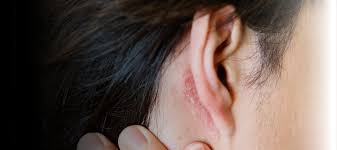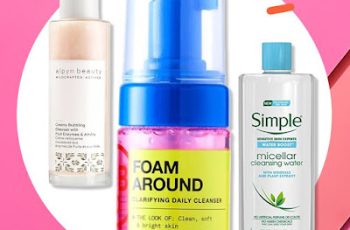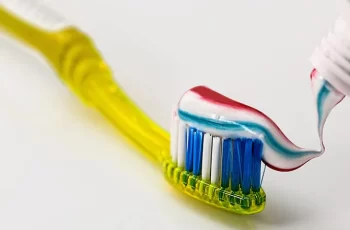
Dry Skin Behind Your Ears? Derms Share 10 Ways to Treat It
When it comes to skincare, we often focus on our faces, necks, and bodies, but how often do we think about the skin behind our ears? According to board-certified dermatologist Geeta Yadav, MD, the skin on our ears is often neglected, which can lead to dryness, irritation, or unsightly scaliness. Unfortunately, dryness behind the ears is more common than you might think and can be caused by a variety of factors.
So, what’s behind those dry patches? It could be a mix of environmental factors, underlying skin conditions, or simply neglecting to moisturize this often-overlooked area. Whether it’s the result of seasonal changes, eczema, or even fungal infections, here’s everything you need to know about why you might be dealing with dryness behind your ears and how to treat it effectively.
What Causes Dry Skin Behind Your Ears?
The skin behind your ears is more vulnerable than you might think. Dr. Yadav explains, “The skin behind the ears is often overlooked in most skincare routines, leading to dryness, irritation, and flaking.” So why does this area get so dry?
Some common causes include:
Environmental Changes: Shifts in weather—particularly cold or dry air—can cause skin to become dehydrated, including the delicate skin behind your ears.
Sunburn: The ears are often exposed to the sun, and like the rest of the skin, they can get sunburned, leading to peeling and dryness.
Eczema: This chronic skin condition can affect any part of the body, including behind the ears, causing dry, inflamed patches of skin.
Fungal Infections: Fungal infections, such as ringworm or yeast infections, can manifest as dry, flaky patches behind the ears.
Allergic Reactions: Sensitivity to hair care products, fragrances, or even jewelry can cause irritation and dryness behind the ears.
If you’re suddenly noticing dryness behind your ears, consider any changes you’ve made recently—whether that’s altering your skincare or hair products, exposing your skin to extreme temperatures, or using new accessories that may be irritating your skin.
When to See a Dermatologist
While most dry skin issues can be addressed with simple at-home treatments, there are times when it’s important to consult a dermatologist. If you notice any of the following, it’s time to seek professional advice:
Persistent Dryness: If the dry patches don’t improve with home remedies, or if they return frequently.
Infection: If the skin becomes red, inflamed, or you see signs of infection (such as pus or crusting), consult your doctor.
Severe Itching: If the dryness is accompanied by excessive itching or irritation that doesn’t go away, it could be a sign of a deeper issue, such as eczema or an allergic reaction.
Other Concerning Symptoms: If the dry skin is part of a larger issue involving other parts of your body, like scaling or irritation elsewhere, a dermatologist will be able to diagnose the underlying condition.
In many cases, however, dryness behind the ears can be treated effectively with some basic steps at home.
10 Ways to Treat Dry Skin Behind Your Ears
1. Gently Cleanse the Area
The first step in treating dryness behind your ears is proper cleansing. If this area is often neglected in your skincare routine, now’s the time to start cleaning it. Dr. Karan Lal, DO, a double-board-certified dermatologist, recommends using a gentle, hydrating cleanser to wash the area. “Cleansing helps to remove dirt, oils, and any buildup of dead skin cells, preventing bacteria and yeast overgrowth,” he explains.
Choose a cleanser that’s non-stripping and formulated for sensitive skin to avoid further irritation.
2. Exfoliate Regularly
Exfoliation is key for maintaining healthy, smooth skin, especially behind the ears. However, because this area is sensitive, it’s best to use a gentle exfoliation method. Dr. Yadav suggests using a damp washcloth to gently rub behind the ears to remove flakes. “This will allow your skin to breathe and absorb moisture better,” she adds.
For a more thorough exfoliation, consider using an exfoliating toner with mild exfoliants like lactic acid or a gentle scrub, but be cautious not to scrub too hard, as this can further irritate sensitive skin.
3. Use a Moisturizer
After cleansing and exfoliating, the next essential step is moisturizing. Dr. Yadav recommends a lightweight moisturizer that helps support the skin barrier. Two of her go-to recommendations are:
Cetaphil Daily Facial Moisturizer SPF 35, which hydrates without clogging pores and offers sun protection.
CeraVe AM Facial Moisturizing Lotion with SPF 30, which contains niacinamide and hyaluronic acid—two ingredients known for soothing and hydrating dry skin.
Moisturizing twice a day, especially after washing the area, will prevent further dehydration and irritation.
4. Seal in Moisture with an Occlusive
For an added layer of protection, occlusive products like Aquaphor’s Healing Ointment can help lock in moisture after you’ve applied your regular moisturizer. Dr. Yadav explains, “An occlusive layer helps to seal in hydration and prevents moisture loss throughout the day or night.”
For those who prefer a more natural alternative, coconut oil can also provide similar benefits. “It not only hydrates the skin but also smells lovely,” Dr. Yadav notes.
5. Apply Hydrocortisone Cream for Inflammation
If the dry skin behind your ears is causing discomfort, redness, or inflammation, consider using hydrocortisone cream. Both Dr. Yadav and Dr. Lal recommend applying a thin layer of this anti-inflammatory cream to reduce itching and swelling. Hydrocortisone creams can provide relief, but they should be used sparingly and only for short-term use unless otherwise advised by your doctor.
6. Avoid Potential Irritating Products
Your ears come into contact with many products, such as shampoos, conditioners, colognes, and mists. Some of these products, especially those with fragrances or harsh chemicals, can irritate sensitive skin behind the ears. Dr. Lal suggests switching to gentler, fragrance-free shampoos and conditioners to reduce the risk of irritation.
7. Wear Sensitive Skin-Friendly Jewelry
Jewelry is another common culprit for causing irritation behind the ears. Certain metals, especially cheap alloys, can trigger allergic reactions. Dr. Lal recommends opting for hypoallergenic jewelry, such as titanium or precious metals like gold or sterling silver, to minimize the risk of irritation.
8. Keep Your Ears Covered in Cold Weather
When temperatures drop, the skin behind your ears can crack and dry out, especially if exposed to cold winds. To protect your ears, consider wearing a cotton or hemp beanie that will keep them warm without irritating the skin. These materials are more breathable and less likely to cause further irritation compared to synthetic fabrics.
9. Use a Humidifier
Dry indoor air, especially during the winter months, can exacerbate dry skin. Dr. Yadav suggests using a humidifier in your home to maintain moisture levels in the air. This is especially helpful for those suffering from conditions like eczema, as it helps prevent excessive moisture loss from the skin.
10. See a Dermatologist for Persistent Issues
If the dryness behind your ears doesn’t improve with home treatments or worsens over time, it’s time to consult a dermatologist. They can diagnose any underlying conditions, such as eczema or fungal infections, that may be contributing to the issue.
Final Thoughts
Dry skin behind your ears may seem like a small concern, but it can cause irritation and discomfort if left untreated. By following these steps and addressing potential triggers like harsh products, weather changes, or underlying skin conditions, you can restore hydration and health to the skin behind your ears.
Remember, while these home remedies work for most cases, if you notice signs of infection or severe inflammation, don’t hesitate to reach out to your dermatologist for further evaluation. With the right care and attention, your ears will feel and look their best in no time!


